
Short description about Github
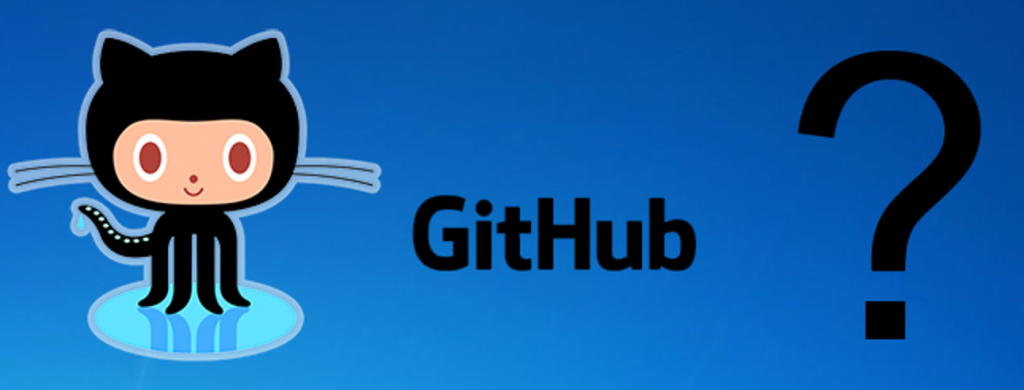
GitHub is industry-standard version control and publishing platform for web developers. GitHub is the place where developers store the code. It is the best place to share code with friends, co-workers, classmates, and total strangers. For understanding GitHub, we should understand “Git.” “Git” is the version control system, which means that whenever the developer creates something and makes changes to the code or releases new versions, anyone can keep track of all the modifications in a central repository.
Moving to questions and answers:
1. What Is Github?
Answer: GitHub is industry-standard version control and publishing platform for web developers. GitHub is the place where developers store the code. It is the best place to share code with friends, co-workers, classmates, and total strangers. For understanding GitHub, we should understand about “Git.” “Git” is the version control system, which means that whenever the developer creates something and makes changes to the code or releases new versions, anyone can keep track of all the modifications in a central repository.
2. What Is Github Link?
Answer: GitHub is a web-based Git or version control repository on the Internet with a hosting service. It offers the distributed version control and source code management (SCM) functionality of Git as well as adding its own new features.
3. Is Github Open Source Software?
Answer: GitHub is not open-source software because they have a commercial offer based known as “GitHub for Enterprise.” Nevertheless, anyone can apply their ideas just like open-source software on GitHub look-alike, known as GitLab which is a ruby application with its source code here.
4. How Does Github Help In Collaborating With Other Developers?
Answer: Whenever any programmer uploads their code to Git, other developers can access and edit it, isolated from each other and with all versions kept intact. Git takes away any confusion with having multiple people working on the same file at the same time. There are no chances of your hard work.
5. What Is A Git Pull?
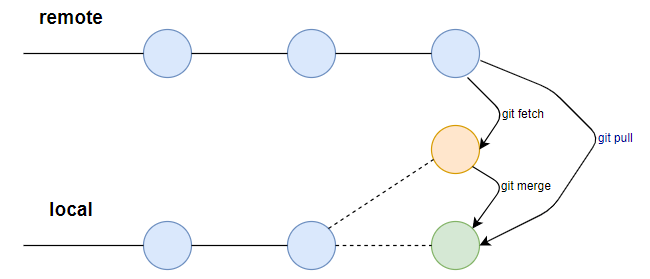
Answer: Git pull is shorthand for Git fetch, followed by Git merge FETCH_HEAD. More specifically, Git pull runs Git fetch with the given parameters and calls Git to merge the retrieved branch heads into the current branch. Should be the name of a remote repository as forwarded to Git-fetch.
6. What Is Github Handle?
Answer: GitHub handle is the username, which is displayed, on the top right corner in GitHub. This is the one we use to log in to GitHub when we enter the site and commit to HTTPS and the one that appears in the URLs of our GitHub repositories.
7. What Is Repo?
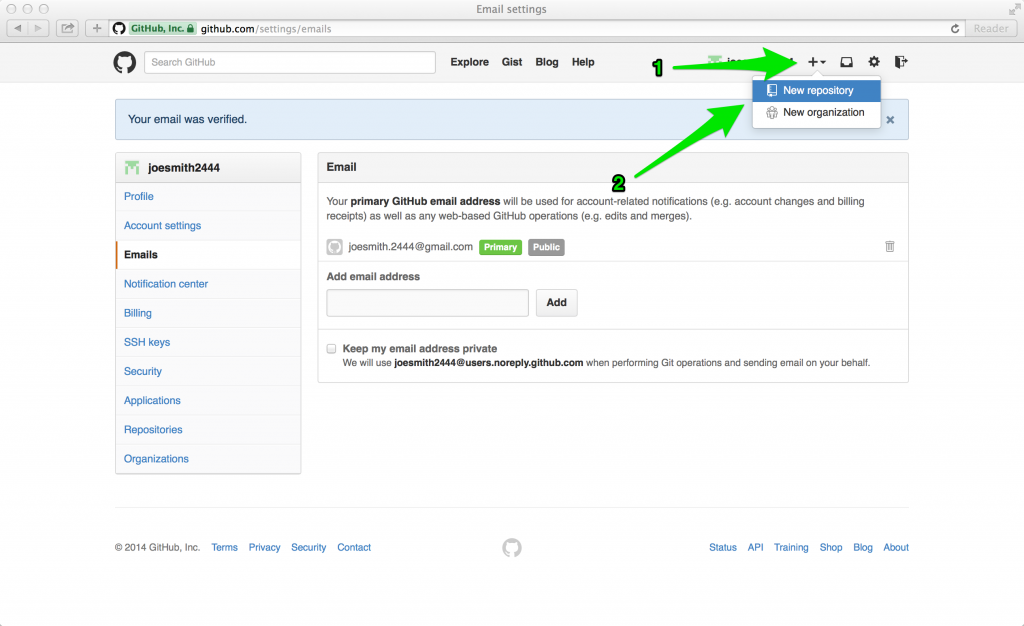
Answers: GitHub users shorten this to “repo.” It can be local to a folder on the computer, or it can be a storage space on GitHub or another online host. We can keep code files, text files, image files; our name it, inside a repository.
8. How To Use Github?
Answer: The use of GitHub can be explained in the following steps:
- Install git and create a GitHub account.
- Create a local git repository.
- Add a new file to the repo.
- Add a file to the staging environment.
- Create a commit.
- Create a new branch.
9. How Can We Create A Branch In Github?
Answer: GitHub has a simple UI for creating branches. Once opened the branch drop-down and it prompts “Find or create a branch.” We need to Type the name of your new branch, then click the “create” button that appears. For retrieving the new branch from GitHub, we can use the standard Git fetch command.
10. What Is A Github Fork?
Answer: Fork is a copy of a repository. Forking a repository allows us to freely experiment with the changes without affecting the original project. Most commonly, forks are used to propose changes to someone else’s project or to use someone else’s project as a starting point of our own idea.
11. What Is A Branch On Github?
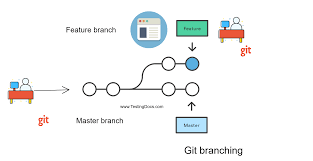
Answer: Branch in Git means a lightweight movable pointer to one of these commits. The default branch name in Git is the master. As we initially make commits, we are given a master branch that points to the last commit being made. Every time we commit, it moves forward automatically.
12. Can We Change Our Github Username?
Answer: We can change our GitHub account name at any time. For this, we need to click the profile picture > Settings > Account Settings > Change Username. Links to the repositories will redirect to the new URLs, but they should be updated on all other sites because someone who chooses the abandoned username can override the links.
13. How it is possible for a developer to simply update the remote references related to the different objects?
Answer: This is possible through the Git PUSH. In fact, it is actually the prime function of the same.
14. Is it possible in Git to merge a branch into the master? How can you find the same?
Answer: Yes, it is possible and the users can easily keep the pace up with the same anytime. The users can directly check the list under the branch section to know more about this.
15. What is gist programming?
Answer: GitHub provides a hosting service that facilitates a web-based Git repository. It includes all the functionality of Git with additional features added in. The gist is an additional attribute added to GitHub, which facilitates the sharing of code snippets, notes, to do lists, and more. We can save our Gists as secret or public in the repository.
16. What language is used in GIT?
Answer: C is the programming language that is used for creating Git which ensures that the overheads are reduced.
17. What are the advantages of Git over SVN?
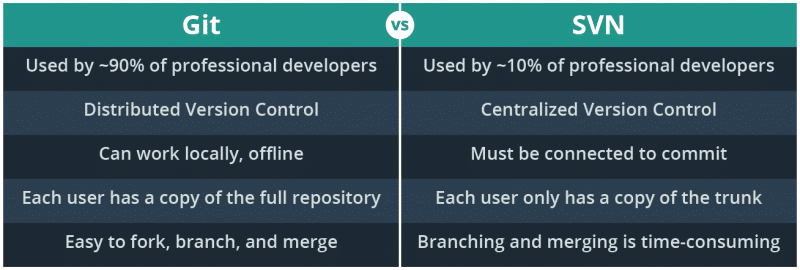
Answer: Since Git is an open source version control system it lets us run multiple versions of our project so that it shows the changes that are made to the code over time and if needed we can keep track of the changes that we have made. This means that a large number of developers can make their own changes and upload those changes so that the changes can be attributed to the particular developers.
18. What is cherry-pick in Git?
Answer: Git cherry-pick is a command that allows the picking of arbitrary Git commits by reference and adding them to the HEAD. Cherry-picking is the process of picking a commit from one branch and applying it to another. It helps in undoing changes.
19. What is origin in Git?
Answer: Origin refers to the remote repository that a project was originally cloned from and is used instead of the original repository’s URL. This allows for easier referencing.
20. How Much Space Do We Get On Github?
Answer: We get a space of 1 GB but if it exceeds 1GB, we receive a polite email from GitHub Support requesting to reduce the size of the repository and scale it down. In addition, we place a strict limit of files exceeding 100 MB in size.
21. How can the users enhance the functionality of a branch in Git?
Answer: It is possible to do so by adding the desired feature in any of the branches. This is generally done through a command Git merge and the best part is there is no limit on adding the features in the branch. Any branch can have any number of features.
22. What is the significance of Git version control?
Answer: When it comes to simply track the background of an array of files and changing their version, this approach is generally preferred. This actually works by capturing the snapshot of the moments and tasks associated. All the information remains present in the repository. However, if the users want, they can simply keep it at any desired location.
23. Can We Delete The Github Account?
Answer: We can delete the GitHub user account at any time. Before we do so, we should hand over the reins of any organizations we might own. Deleting the user account removes all repositories, forks of private repositories, wikis, issues, pull requests, and pages owned by the account.
24. What is the conflict situation in Git and how it can be solved?
Answer: Conflict is a situation when both the commits that need to be merged have changed at the same place. This often confuses the software which change should be taken into consideration and which one should be neglected. The best manner to solve this concern is to simply edit the files through the appropriate procedure.
25. What is branching it Git and what are its benefits?
Answer: The users are free to make as many branches as they want. A branch is nothing but a set of tasks that is created by the users. While performing any task, whenever the interrupt arrives, the user can switch to another branch on priority and can accomplish the same first. The users can easily switch to the previous branch without compromising with anything. It actually boosts up the speed and enables users to perform multiple tasks at the same time. Branches are generally marinated as one in the Github.
26. What Is The Difference Between Bit Bucket And Github?
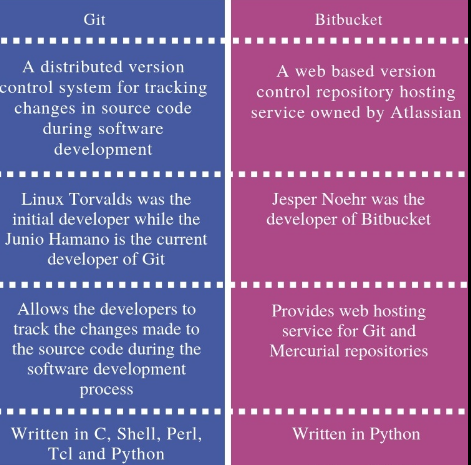
Answer: Bit bucket and GitHub are very similar in terms of features. If the VCS is Mercurial, then Bit bucket is for us. Each has its own features not found in the other, such as GitHub pages for small web-hosting projects, or Bit bucket’s JIRA integration.
27. Name any two Git repository hosting services that are common
Answer: These are Visual Studio Online and Git Enterprise
28. Are you familiar with the Git Clone?
Answer: It is basically a command which is deployed when it comes to copying a Git repository that already exists. There are a lot of programmers who make use of this. The best thing is it really doesn’t matter whether the project is large or small, the same can easily be considered whenever the need for the same is felt.
29. How To Upload Files To Github?
Answer: Following are the step required for uploading files:
- Navigate to the main page of the GitHub repository.
- Under your repository name, click Upload files.
- Drag and drop the file or folder you would like to upload to your repository onto the file tree.
- At the bottom of the page, type a short, meaningful commit message that describes the change you made to the file.
30. What Is a Staging Environment?
Answer: This is a process through which, we request Git, to put files into a commit? This is where the staging environment or index comes in handy. When we make changes to the repo, Git notices that a file has changed but will not do anything with it (like adding it in a commit). To add a file to a commit, we need to add it to the staging environment. To do this, we can use the Git add command. Once we have used the Git, add the command to add all the files we want to the staging environment, we can then request Git to package them into a commit using the Git commit command.
31. Explain Github Workflow?
Answer: Git provides three key areas that are uniquely designed, to give developers lots of control over workflow:
- A working directory, which contains all the current states of files. Numerous developers can access the directory when they are logged in, so collaboration is extremely easy.
- Staging area, which indexes everything for the next commit, and any files that have been added or edited since the previous save.
- Git repository is a dedicated space where new commits are added. A Git repository maintains all the metadata, the files, and a dedicated database that tracks versions of the project.
With proper importance given to speed, data integrity, and excellent support for distributed, non-linear workflows, GitHub provides excellent standards for remote digital teams. In addition, Git is convenient for working offline or without a VPN (a virtual private network), making it easy for the developers to work on the move and stay productive at will. For small & medium enterprises that are involved in building sites rapidly and prototypes for their customers, GitHub is the most efficient, safe, and seamless way to get projects reviewed, approved, and signed off or on. GitHub provides the most cost-effective module in any business.
32. What Is A Commit?
Answer: Commit is a record of the files that have been modified, since the last time we made a commit. We make changes to our repo (for example, adding a file or modifying one) and then tell Git to put those files into a commit. Commits make up the core of our project and allow us to go back to the state of a project at any point.
33. Can Developers Test-drive Their Projects On Github?
Answer: GitHub is Git’s cloud-based publishing tool and hosting platform, which also has a desktop application for locally storing projects. With GitHub, developers can bring projects to life. Git repositories can be hosted on GitHub and made “live,” enabling the developer to post a site or application when it is in development stages. By sending a link to a GitHub project, clients can easily test-drive a site in progress with its functionality, rather than just looking for flat mockups.
34. What Is The Basic Function Of Github?
Answer: The flagship basic of GitHub to allow developers to browse the most popular development projects for “trending” repositories, an exciting method of checking out other developers’ work and check out “starred” projects that are recommended by GitHub staff members. Public repository files can also be downloaded as zip files and saved locally on any computer. It also provides access control and several collaboration features, such as wikis and basic task management tools for every project.
35. How many characters are there in the SHAI name?
Answer: It is a 40 Character String that can vary in some special cases.
36. What Is A Star In Github?
Answer: Star in GitHub is equivalent to “Like” button on Facebook. A voting system, which enables developers to vouch for projects they think are excellent.
On this collaboration front, GitHub also lets team members set up the following:
- Issues: These keep track of what collaborators are doing and allow them to ask about bugs. Issues can be opened or closed once they have been rectified.
- Milestones: These pre-determined set goals, which motivate the collaborators to work towards recognition.
37. How Can We Create A Gist?
Answer:Creating a gist requires a very simple process as depicted in the steps below: –
- Sign in to GitHub.
- We should the navigate to the gist home page.
- After this, we need to type an optional description and name for the gist.
- Key in the text of your gist into the gist text box.
- Following this we should select either to create a public gist or to create a secret gist.
38. Do you think GitHub is better as compared to Subversion of same? Why or why not?
Answer: One of the best things about Github is it’s an open-source technology where the developers are free to run the versions of their projects without worrying about anything. This is exactly what enables the developers to have a quick review of all the changes made to the code over time. The users can also keep track of actual code before modification. With a subversion, nothing like this is possible. Therefore, Github is a better option.
39. What Is A Gist Programming?
Answer: GitHub provides a hosting service that facilitates a web-based Git repository. It includes all the functionality of Git with additional features added in. The gist is an additional attribute added to GitHub, which facilitates the sharing of code snippets, notes, to do lists and more. We can save our Gists as secret or public in the repository.
40. What is the upper limit on the heads in the Gits?
Answer: There is no limit and users are free to involve any number of heads in the repository. It can be considered as a simple standard reference to a committed object. The commit object couldn’t be the same for all the heads.
41. What Does It Mean To Star A Repo In Github?
Answer: Starring a repository allows us to keep track of projects that we find interesting, even if we aren’t associated with the project. When we Star a repository, we are actually performing two distinct actions: Creating a bookmark for easier access, apart from motivating fellow developers and rate them.
42. How to Add Files to the Local Repository in GitHub?
Answer: To add the files which we want to commit, to the remote repository, this can be also be done via the git command prompt.
For this we need to run a few commands which is as follows:
git add "your file name with full path"43. How to Switch Branch in GitHub?
Answer:
- Switch branch which simply means, to navigate from one branch to another.
- By the use of command, we can do this easily by the use of a versioning tool. Also, we can do this via GitHub to see the changes in the other branches. Just we have to go to the GitHub official site and select the branch we want to move to.
44. How it is possible for you as a user of Git to define the information of a user, behavior of a repository as well as the information of preferences in the programming?
Answer: This can simply be done with the help of a command named Git config. Although there are other methods getting the results through the command prompt always makes sure of originality and reliability.
45. Merge Command.
Answer: To merge the different branches into one other we can use the GitHub interface to make it fast, we also have appreciated the git command to do so. But for the freshers and beginners to git, it will be like difficult to do it. So GitHub made this easy for us to give this option there.
46. Can you tell us a few benefits of using GitHub over other platforms?
Answer: There are a very large number of benefits that developers can easily make sure of with this approach. The very first one is the high availability of GitHub along with excellent support. In addition to this, all the users can simply make sure of the data replication, as well as the redundancy of the same. Moreover, the error-free outcomes are exactly what for which GitHub is widely appreciated.
It is a platform independent and users can easily get the results in the desired manner without compromising with anything. Also, it is collaboration-friendly and users can simply use it in the way they are comfortable.
47. Explain Git Development Process in Detail?
Answer:
- Analysis
- Specification
- Architecture
- Implementation of requirement
- Testing of the functionality or application
- Document the things in detail
48. Name the tool that can be deployed for Git migration?
Answer: SubGit
49. How to Clone Repository from GitHub?
Answer: The clone here means to make the exact same copy of the copy on our local system by using the URL. For this we can use the git command with the URL we want to clone. This URL can be found on the GitHub page itself. It is associated with the branch we want to clone into our local system.
Also, find the below command to clone the repository:
git clone “ url ”50. How to Switch Branch in GitHub?
Answer:
- Switch branch which simply means, to navigate from one branch to another.
- By the use of command, we can do this easily by the use of a versioning tool. Also, we can do this via GitHub to see the changes in the other branches. Just we have to go to the GitHub official site and select the branch we want to move to.
Also if we want to switch the branch of code on local then can easily run the below command on the command prompt.
git checkout "your branch name"- Mastering Qualitative Research: The Role of Focus Groups in Data Collection - July 11, 2024
- What is robots ops? - July 10, 2024
- 5 Effective Online Learning Strategies for DevOps Professionals - July 4, 2024

